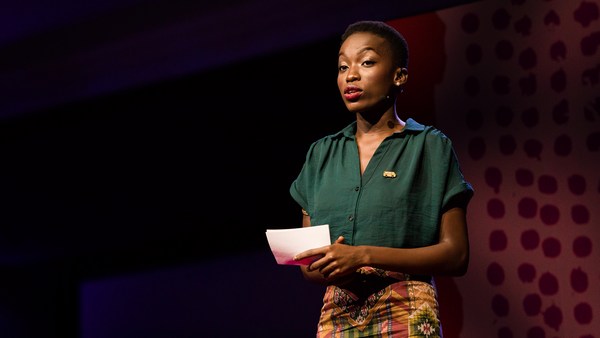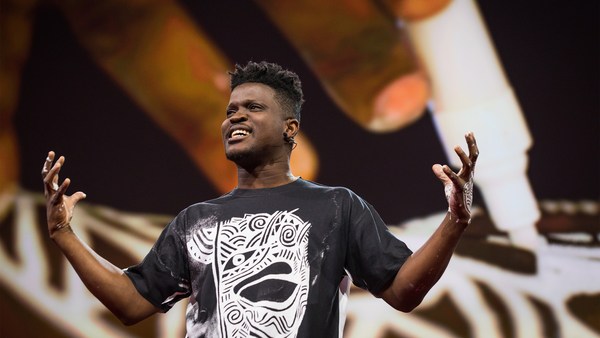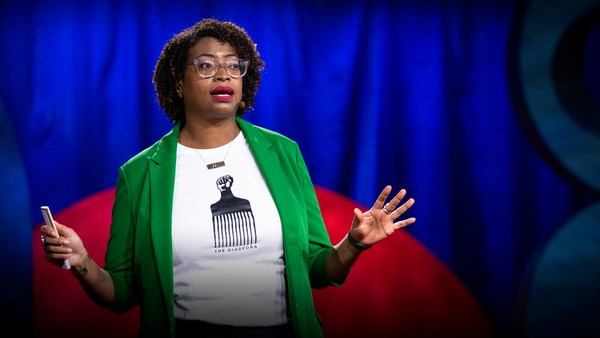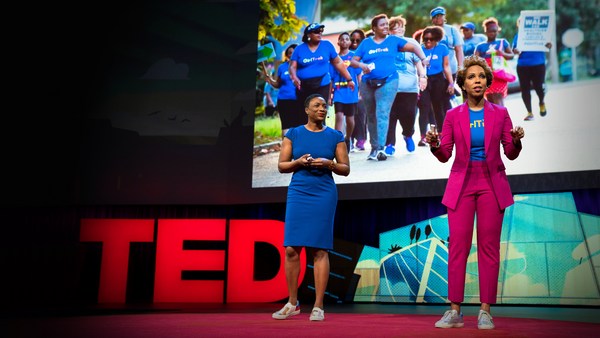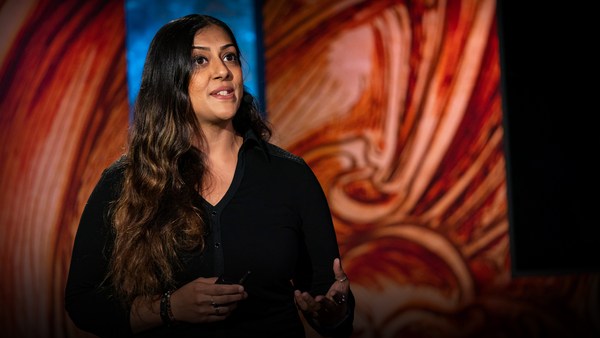I'd like for you to take a moment to imagine this with me. You're a little girl of five years old. Sitting in front of a mirror, you ask yourself, "Do I exist?" In this space, there is very little context, and so you move into a different one, one filled with people. Surely, now you know you're not a figment of your own imagination. You breathe their air. You see them, so they must see you. And yet, you still can't help but wonder: Do I only exist when people speak to me?
Pretty heavy thoughts for a child, right? But through various artworks that reflect upon our society, I came to understand how a young black girl can grow up feeling as if she's not seen, and perhaps she doesn't exist. You see, if young people don't have positive images of themselves and all that remains are negative stereotypes, this affects their self-image. But it also affects the way that the rest of society treats them.
I discovered this having lived in Cape Town for about five years at the time. I felt a deep sense of dislocation and invisibility. I couldn't see myself represented. I couldn't see the women who've raised me, the ones who've influenced me, and the ones that have made South Africa what it is today. I decided to do something about it.
What do you think when you see this? If you were a black girl, how would it make you feel? Walking down the street, what does the city you live in say to you? What symbols are present? Which histories are celebrated? And on the other hand, which ones are omitted?
You see, public spaces are hardly ever as neutral as they may seem. I discovered this when I made this performance in 2013 on Heritage Day. Cape Town is teeming with masculine architecture, monuments and statues, such as Louis Botha in that photograph. This overt presence of white colonial and Afrikaner nationalist men not only echoes a social, gender and racial divide, but it also continues to affect the way that women -- and the way, particularly, black women -- see themselves in relation to dominant male figures in public spaces. For this reason, among others, I don't believe that we need statues. The preservation of history and the act of remembering can be achieved in more memorable and effective ways.
As part of a year-long public holiday series, I use performance art as a form of social commentary to draw people's attention to certain issues, as well as addressing the absence of the black female body in memorialized public spaces, especially on public holidays. Women's Day was coming up. I looked at what the day means -- the Women's March to the union buildings in 1956, petitioning against the pass laws. Juxtaposed with the hypocrisy of how women are treated, especially in public spaces today, I decided to do something about it.
Headline:
[Women in miniskirt attacked at taxi rank]
How do I comment on such polar opposites? In the guise of my great-grandmother, I performed bare-breasted, close to the taxi rank in KwaLanga. This space is also called Freedom Square, where women were a part of demonstrations against apartheid laws. I was not comfortable with women being seen as only victims in society. You might wonder how people reacted to this.
(Video) Woman: (Cheering)
Woman 2 (offscreen): Yes!
Sethembile Msezane: Pretty cool, huh?
(Applause)
So I realized that through my performances, I've been able to make regular people reflect upon their society, looking at the past as well as the current democracy.
(Video) Man (offscreen): She's been there since three o'clock.
Man 2 (offscreen): Just before three. About an hour still?
Man 1: Yeah. It's just a really hot day.
Man 1: It's very interesting. It's very powerful. I think it's cool. I think a lot of people are quick to join a group that's a movement towards something, but not many people are ready to do something as an individual.
Man 2: So it's the individual versus the collective.
Man 1: Yeah. So I think her pushing her own individual message in performance ... it's powerful. Yeah, I think it's quite powerful that she's doing it on her own. I'd be interested to know why she's using hair extensions as wings, or whatever those things are meant to be. They are wings, yes?
Woman 3: With her standing there right now, I think it's just my interpretation that we are bringing the statue down and bringing up something that's supposed to represent African pride, I think. Or something like that. Something should stand while Rhodes falls, I think that's what it's saying. Yeah. Yes. Thank you.
Man 3: What is behind me represents the African culture. We can't have the colonialist law, so we need to remove all these colonial statues. We have have our own statues now, our African leaders -- Bhambatha, Moshoeshoe, Kwame Nkrumah -- all those who paid their lives for our liberation. We can't continue in the 21st century, and after 21 years of democracy, have the colonizers in our own country. They belong somewhere. Maybe in a museum; not here. I mean learning institutions, places where young people, young minds are being shaped. So we cannot continue to have Louis Botha, Rhodes, all these people, because they're representing the colonialism.
(Applause)
Sethembile Msezane: On April 9, 2015, the Cecil John Rhodes statue was scheduled to be removed after a month of debates for and against its removal by various stakeholders. This caused a widespread interest in statues in South Africa. Opinions varied, but the media focused on problematizing the removal of statues. On that -- well, that year, I had just begun my master's at the University of Cape Town. During the time of the debate of the statue, I had been having reoccurring dreams about a bird. And so I started conjuring her mentally, spiritually and through dress. On that day, I happened to be having a meeting with my supervisors, and they told me that the statue was going to fall on that day. I told them that I'd explain later, but we had to postpone the meeting because I was going to perform her as the statue came down.
Her name was Chapungu. She was a soapstone bird that was looted from Great Zimbabwe in the late 1800s, and is still currently housed in Cecil John Rhodes's estate in Cape Town. On that day, I embodied her existence using my body, while standing in the blazing sun for nearly four hours. As the time came, the crane came alive. The people did, too -- shouting, screaming, clenching their fists and taking pictures of the moment on their phones and cameras. Chapungu's wings, along with the crane, rose to declare the fall of Cecil John Rhodes.
(Applause)
Euphoria filled the air as he became absent from his base, while she remained still, very present, half an hour after his removal.
Twenty-three years after apartheid, a new generation of radicals has arisen in South Africa. The story of Chapungu and Rhodes in the same space and time asks important questions related to gender, power, self-representation, history making and repatriation. From then on, I realized that my spiritual beliefs and dreams texture my material reality. But for me, Chapungu's story felt incomplete. This soapstone bird, a spiritual medium and messenger of God and the ancestors, needed me to continue her story. And so I dabbled in the dream space a little bit more, and this is how "Falling" was born.
[A film by Sethembile Msezane]
(Video) (A capella singing)
[FALLING]
(Applause)
In the film, Zimbabwe, South Africa and Germany share a common story about the soapstone birds that were looted from Great Zimbabwe. After Zimbabwe gained its independence, all the birds except for one were returned to the monument. "Falling" explores the mythological belief that there will be unrest until the final bird is returned.
Through my work, I have realized a lot about the world around me: how we move through spaces, who we choose to celebrate and who we remember. Now I look in the mirror and not only see an image of myself, but of the women who have made me who I am today. I stand tall in my work, celebrating women's histories, in the hope that perhaps one day, no little black girl has to ever feel like she doesn't exist.
Thank you.
(Applause)
